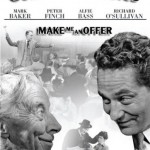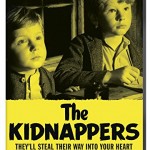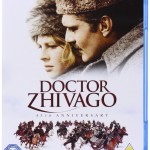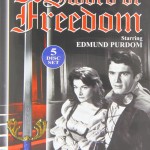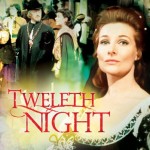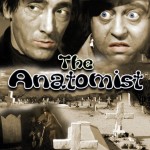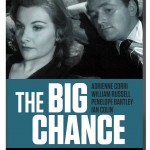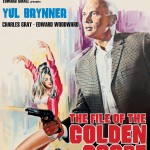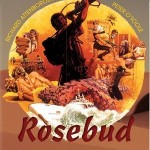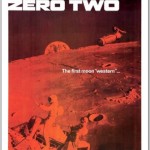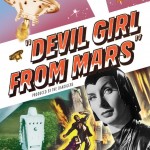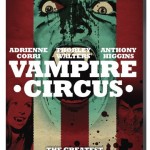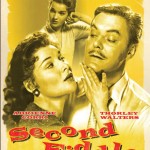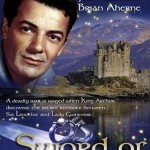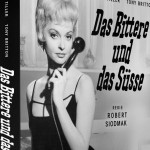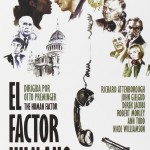
about me
Anyone who knows me is aware that I am a bit of a movie buff. Over the past few years I have been building an autograph collection of my favourite actors’ signed photographs. Since I like movies so much there are many actors whose work I enjoy. I have collected the photographs from the actors themselves, through contacts in the studios and through auctions. I now have over 2,000 photographs in the collection.
My Autograph Collection
I have separated my autograph collection into different categories, which you can see below. Feel free to browse whichever section interests you. Inside, I share not only the autographed photo in my possession, but also information about the actor, including their biography, photos and posters of their movies, and sometimes videos dedicated to them.
Whether you’re drawn to classic Hollywood icons, contemporary superstars, or character actors with a cult following, there’s something in my autograph collection for every movie enthusiast. If you enjoy my blog, don’t hesitate to leave a comment on one of my entries.
Actors Autograph Collections
Blog Categories
BRITISH ACTORS
Collection of Classic Brittish Actors
IRISH ACTORS
Collection of Classic Irish Actors
HOLLYWOOD ACTORS
Collection of Classic Hollywood Actors
EUROPEAN ACTORS
Collection of Classic European Actors
CONTEMPORARY ACTORS
Collection of Classic Contemporary Actors
RECENT POSTS
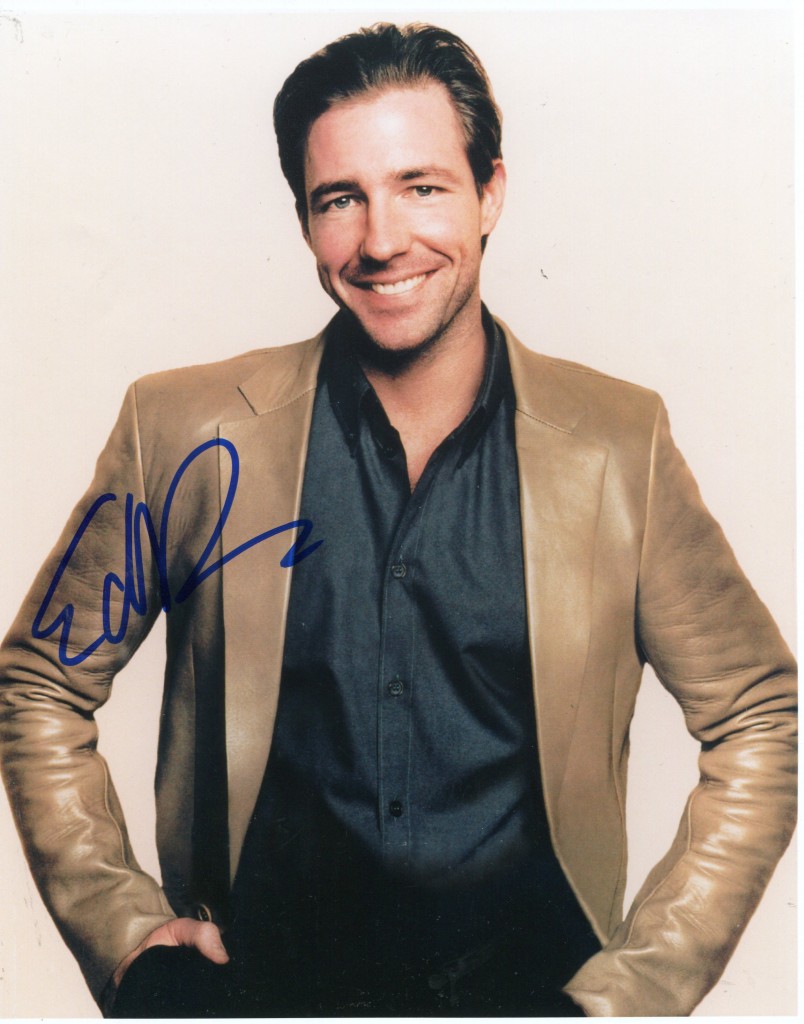
Edward Burns was born in 1968 in Queens, New York to an Irish-American family. He is best remembered for his role in “The Brothers McMullen” in 1998. Other films including “Saving Private Ryan” and “Looking For Kitty”. He is married to model Christy Turlington.
TCM overview:
Like Steven Soderbergh, Quentin Tarantino and Allison Anders, actor-writer-director Edward Burns rose to prominence during the indie film boom of the mid-1990s on the strength of his debut film, “The Brothers McMullen” (1995). A thoughtful, good-natured comedy-drama about three Irish-Catholic siblings, it won the Grand Jury Prize at Sundance and established Burns as a director on the rise. Unfortunately, some of his subsequent efforts, which included “She’s The One” (1996), “Sidewalks of New York” (2001) and “Nice Guy Johnny” (2010) felt like rehashes of “McMullen” in their wordiness and low-wattage conflicts. Burns also enjoyed an occasional side career as an actor, most notably in “Saving Private Ryan” (1998), but his tenacity and dedication to intimate dramas – for better or worse – were his calling cards for his decade-plus career.
Edward J. Burns Jr., born Jan. 28, 1968 in Woodside, Queens County, NY, was the son of police sergeant Edward J. Burns, Sr. and his wife Molly, a Federal Aviation Administration manager at Kennedy Airport in New York. Burns grew up with his older sister Mary and younger brother Brian in Valley Stream, Long Island; there, he enjoyed a typical Irish-Catholic upbringing, including time served as a alter boy. His parents, both dyed-in the-wool movie buffs, encouraged their children to pursue goals that would take them far beyond their neighborhood. Film eventually became his chosen medium, and after time at Oneonta College and State University of New York at Albany, he transferred to Hunter College, where he began making short films.
After graduation, Burns found work as a production assistant on a variety of television news programs, including “Entertainment Tonight” (syndicated, 1981- ), while writing and directing the 45-minute short “Brandy,” which made its way into the 1992 Independent Feature Film Market. The following year, he began work on a feature about his Irish-American roots in suburban New York. Shot on 16mm film at the home of Burns’ parents for less than $30,000 – some of which came from Burns’ father, who was credited as an executive producer – and utilizing a crew of fellow “Entertainment Tonight” staffers, “The Brothers McMullen” was a surprisingly heartfelt, funny picture about a trio of siblings who learn to contend with their collective past as their lives take a variety of turns in regards to love, fidelity, maturity and family. Burns himself led the cast of unknowns as brother Barry, who struggled with committing to Audrey.
“McMullen” was a major hit at the 1995 Sundance Film Festival, capturing its Grand Jury Prize and making Burns a rising star in the burgeoning world of independent features. Released theatrically by Fox Searchlight Pictures, it netted $10 million at the box office, which in turn yielded a green light for a second Burns film. The follow-up, 1996’s “She’s the One,” featured several cast and crew members from “McMullen,” including Bahns and co-star Mike McGlone, but the success of the first film allowed him a $3 million budget that afforded such name performers as Jennifer Aniston and Cameron Diaz, as well as an original song score by Tom Petty and the Heartbreakers. A romantic comedy about a pair of Irish-Catholic brothers (Burns and McGlone) who wrestle with heartbreak, broken marriages and new loves, “She’s the One” received mixed reviews, many of which cited its similarity to “McMullen,” and it did not perform as well with moviegoers.
Undaunted, Burns forged ahead with this third film, “No Looking Back” (1998), a lower budget romantic drama with Lauren Holly as a restless small-town waitress who escapes the doldrums of her life via an old flame, played by Burns. A major disappointment in the wake of “McMullen” and “She’s the One,” .
While Burns’ efforts as director occasionally struggled to find an appreciative audience, his turns as an actor caught the eye of Hollywood. His laconic, dry-witted delivery and model-grade good looks received a first-class introduction to mainstream audiences through Steven Spielberg’s World War II epic, “Saving Private Ryan” (1998), which cast him as Private Robert Reiben, one of only three members of Army Captain Tom Hanks’ team to survive a mission to save missing a GI called home by the government. However, subsequent efforts to mint him as a leading man, including the cop thriller “15 Minutes” (2001) with Robert De Niro, and “A Sound of Thunder” (2006), with Burns as a time-traveling scientist, were dismal failures, though he made for an appealing con man in the thriller “Confidence” (2003) with Dustin Hoffman. In later years, Burns seemed more comfortable in supporting roles, frequently as a boyfriend or fiancé whose disinterest spurs the female lead to seek romance elsewhere, as in “The Holiday” (2006) or “27 Dresses” (2008). Burns also enjoyed a brief stint as a boyfriend of Grace Adler (Debra Messing) in season three of “Will and Grace” (NBC, 1998-2006), and a season-long run as himself on “Entourage” (HBO, 2004- ) that centered on him penning a television series for the struggling Johnny Drama (Kevin Dillon).
Burns returned to the director’s chair in 2001 for “Sidewalks of New York,” a gentle comedy-drama about a group of romantically damaged Big Apple residents – again led by Burns, but also featuring Rosario Dawson, Dennis Farina, Stanley Tucci and Brittany Murphy – who try to overcome their fear of commitment. Shot in 17 days for less than $1 million, it received modest praise and turned a profit, which brought Burns back into the indie fold. It also served as the terminal point for his relationship with co-star Heather Graham, whom he had been dating since his breakup with Lauren Holly in 1998. The pair officially split in 2000, prior to the film’s release. That same year, he began dating model Christy Turlington, with whom he would endure a tumultuous relationship for several years. Initially engaged in 2001, they broke up shortly after the attacks on New York City on Sept. 11, 2001. They reunited and were married in 2003, the same year Turlington gave birth to their daughter, Grace. A son, Finn, followed in 2006.
Burns’ directorial career saw diminishing returns in the years that followed “Sidewalks of New York.” “Ash Wednesday” (2002), with Burns as a guilt-ridden Irish-Catholic and a woefully miscast Elijah Wood as his long-lost brother, opened in only two theaters and grossed less than $3,000. Its follow-up, “Looking for Kitty,” reunited Burns with some of his veteran players, including David Krumholtz and Connie Britton, in a comedy-drama about a basketball coach (Krumholtz) who hires a mouthy PI (Burns) to find his missing wife. It received more positive reviews, but again, only garnered a limited release. Burns tried his hand at television with “The Fighting Fitzgeralds” (NBC, 2001) a comedy about an Irish firefighter (Brian Dennehy) whose retirement is routinely interrupted by his family, but the series – co-produced by Burns’ brother Brian under their joint production company, Irish Twins – lasted less than a season.
Despite growing critical sentiment that Burns had squandered the goodwill generated by his debut, he was still able to raise the financing for film projects. In 2006, he saw the release of “The Groomsmen,” with Burns again drawing from life as a groom-to-be that is about to marry his longtime girlfriend (Brittany Murphy), who, like Turlington, is five months pregnant at the time of the ceremony. Though his supporting cast, which included Jay Mohr, John Leguizamo, Donal Logue and Matthew Lillard, received solid reviews, the film performed poorly during its theatrical run. The romantic drama “Purple Violets” (2007), with Selma Blair and Patrick Wilson, did not even make it to theaters; instead, the film earned the distinction for being the first feature to debut on iTunes. Burns also kept himself busy with a graphic novel, Dock Walloper, in 2007 and a series of noir-styled Internet shorts called “The Lynch Pin,” with Burns as a hired killer, in 2009. The following year saw him back on the festival trail with his latest film, “Nice Guy Eddie,” with Burns now playing the libertine uncle to Matt Bush’s title character, the sort of congenial good guy that Burns himself played a decade prior.
- Liam
- No Comments

Nora-Jane Noone was born in 1984 in Newcastle, Galway. She made her film debut in “The Magadelene Sisters” in 2002. She plays Garda kate Noonan in the ‘Jack Taylor’ triller series with Iain Glen. She played ‘Louise Hazel’in “Coronation Street”. She recently starred in the TV series “Deception”.
IMDB entry:
Nora-Jane Noone was born on March 8, 1984 in Galway, Ireland. She is an actress, known for The Descent (2005), The Magdalene Sisters (2002) and Savage (2009). Attended The Performing Arts school in Galway Attended college in NUI Galway, studying science. Born in Newcastle, Galway, Ireland. Previous acting role before “The Magdalene Sisters” was as Jan in a High school production of “Grease”Is a dancer and musician – can play the piano. She joined the cast of “Coronation Street”, playing a single mum of one and as a possible love interest for Steve McDonald. [February 2005]
- Liam
- No Comments
Robert Hays was born in 1947 in Maryland. He is best remembered for his role in “Airplane” in 1980.
TCM overview:
An earnest, boyishly handsome actor, Robert Hays has often adopted an amusing deadpan expression as well-meaning but clueless romantic leads caught up in farcical situations. A “Marine brat”, Hays grew up in Turkey, India and England before graduating from high school in Nebraska. Attending college in San Diego, he caught the theater bug after studying acting for a semester and promptly joined the Actor’s Guild at the Old Globe Theater. Hays stayed with the company for five years, performing in plays ranging from “Richard III” to “The Glass Menagerie” to “Say Who You Are”, winning the Globe’s Atlas award for the latter.
Hays made his TV debut guesting on ABC’s detective series “Harry O” and began appearing on TV-movies soon thereafter. A first series, “The Young Pioneers” (ABC, 1978), with Hays as the eponymous couple’s neighbor, fizzled after three episodes, but he had more luck with “Angie” (ABC, 1979-80). As clean-cut Brad Benson, Hays played a wealthy young doctor who dealt with sitcom adventures after marrying a poor waitress (Donna Pescow). The show was never a huge hit, but it got Hays noticed, and he made a successful debut in features with the hilarious disaster spoof, “Airplane!” (1980). As Ted Striker (a role he reprised for the 1982 sequel) he was quite funny as the goofy yet stalwart former pilot who must try to land an endangered plane.
Hays’ wide-eyed, middle-America good looks suggested promise in films, but the unpopular “Take This Job and Shove It” (1981), based on the hit song, failed to consolidate his fame. Subsequent features were minor farces all cut from the same cloth. In “Trenchcoat” (1982) and “Fifty/Fifty” (1991), he played bumbling spies, while “Honeymoon Academy” (1990) had him married to a spy caught up in work during their honeymoon. “Scandalous” (1984), meanwhile, put Hays in comic suspense once more as a reporter charged with murder. He later did direct-to-video releases like “No Dessert Dad, Till You Mow the Lawn” and “Raw Justice” (both 1994).
The likable Hays, a highly recognizable TV face, kept busy in the comic TV-movies “The Girl, the Gold Watch and Everything” (syndicated, 1980) and “Murder by the Book” (NBC, 1987). “Running Against Time” (USA, 1990) found a feckless, time-traveling Hays trying to prevent JFK’s assassination, and he also had his hands full with “Deadly Invasion: The Killer Bee Nightmare” (Fox, 1995). Often cast in roles calling for him to react as much as act, he proved a good choice for a TV version of “Mr. Roberts” (NBC, 1984) and did his charming professional best by such short-lived TV series as “Starman” (ABC, 1986-87), “FM” (NBC, 1989-90) and “Cutters” (CBS, 1993). Hays had a rare opportunity to display his underused dramatic ability as Victoria Principal’s abusive husband in “The Abduction” (Lifetime, 1996).
The above TCM overview can also be accessed online here.


- Liam
- No Comments

Sam Waterston was born in Cambridge,Massachusetts in 1940. . Among roles, he is noted for his Academy Award-nominated portrayal of Sydney Schanberg in 1984’s The Killing Fields, and his Golden Globe-nominated and Screen Actors Guild Award-winning portrayal of Jack McCoy on the NBC television series Law & Order. He has been nominated for multiple Golden Globe, Screen Actors Guild, BAFTA and Emmy awards, having starred in over eighty film and television productions during his forty-five-year career.[1] Allmovie has characterised Waterston as having “cultivated a loyal following with his quietly charismatic, unfailingly solid performances.”[2] In January 2010, he received a star on the Hollywood Walk of Fame.
TCM overview:
A lanky, quietly intense, classically-trained actor, Sam Waterston entered film in the mid-1960s, most typically cast as pensive dreamers and intelligent yet essentially ordinary middle-class types. He languished in several forgettable features while piling up impressive credits on the New York stage until he scored as Tom in a fine TV adaptation of Tennessee Williams’ “The Glass Menagerie” (ABC, 1973), opposite Katharine Hepburn. Waterston garnered further attention and acclaim, and made his most significant inroads into features up until that time, as Nick Carraway in the glossy but otherwise middling adaptation of F. Scott Fitzgerald’s “The Great Gatsby” (1974). A very persuasive and versatile performer with a slightly worried expression, the dark-haired Waterston has appeared in a series of Woody Allen films, beginning with “Interiors” (1978), including “Hannah and Her Sisters” (1986) and culminating with a moving performance as the rabbi with failing eyesight in “Crimes and Misdemeanors” (1989). Conveying a thoughtful, sometimes anguished integrity, he gained perhaps his greatest acclaim in features for his Oscar-nominated work as journalist Sidney Schanberg, exploring the plight of the poor of Cambodia in Roland Joffe’s “The Killing Fields” (1984). He also did well in the delicate period piece “The Man in the Moon” (1991) and proved a good choice for the average American father who happens to be married to a “Serial Mom” (1994) in John Waters’ typically outrageous farce. In 1995, Waterston made his feature producing debut with “The Journey of August King”, in which he also had a supporting role. Waterston’s next entry into producing brought him to the small screen, where he worked behind the scenes as well as co-starring in the Showtime original movie “A House Divided” (2000). Here Waterston played a plantation owner who rapes one of his slaves and fathers a child who would become, after his death, a landowner and the wealthiest African-American woman in Georgia. Other notable TV-movie work included his portrayal of real-life hero Dr. Karl Koster, a Danish man who helped save Jewish lives during the Nazi’s regime, in the ABC TV-movie “Miracle at Midnight” (1998, which reteamed him with frequent film co-star Mia Farrow). As Waterston’s television career excelled, his work in film was more infrequent, but later big-screen credits included a featured role in the Ismail Merchant drama “The Proprietor” in 1996, a turn as the President of the United States in the political thriller “Shadow Conspiracy” in 1997 and, for Merchant-Ivory, in “Le Divorce” 2003, playing father to a pair of American expatirate sisters in Paris. Stage work has kept Waterston perennially busy: he was a recurring presence with the New York Shakespeare Festival from 1963 until 1976 and won several acting awards for his Benedict in a 1972 production of “Much Ado About Nothing”. He has subsequently performed on and off-Broadway in plays ranging from the seriousness of “The Trial of the Catonsville Nine” (1971) to the comical “Lunch Hour” (1980-81) and the poignant “A Walk in the Woods” (1988). Conveying a gentle, relaxed yet determined and craggy intensity, Waterston, with the convenient added merit of having bushy eyebrows, also played Abraham Lincoln in a 1993 revival of “Abe Lincoln in Illinois”, recreating a role he had earlier played in the TV-movie, “Gore Vidal’s Lincoln” (NBC, 1988). TV has brought Waterston other rewarding roles, as in the absorbing miniseries “Oppenheimer” (PBS, 1982), in which he played the controversial physicist who helped develop the atomic bomb, and in TV-movies including “Friendly Fire” (ABC, 1979), “Finnegan Begin Again” (HBO, 1985) and “David’s Mother” (CBS, 1994). He received great career exposure (and earned a pair of Emmy nods) with his role as a single father coping with dramatic social change in the 1950s South in the critically well-received, but low-rated series, “I’ll Fly Away” (NBC, 1991-93). Waterston joined another intelligent dramatic series when he replaced Michael Moriarty as the resident assistant D.A. on NBC’s “Law & Order” in 1994. The actor brought an alluring intensity and dedicated aggressiveness to the role of Jack McCoy, a motorcycle riding, possibly alcoholic lawyer. Injecting new life into the long-running series, Waterston earned three Emmy nominations for his starring role, which he would continue to play for a decade. He also earned critical accolades for his sensitive portrayal of Dennis Shepard, the father of slain gay gay college student Matthew Shepard in the television movie “The Matthew Shephard Story” (2002). The movie chronicles how Matthew’s parents came to terms with his life and concluded that their response to the murder trial of their son’s killer could end the cycle of hate.
- Liam
- No Comments

Benita Humewas born in 1906 in London. She made her film debut in the U.K. in 1925 in “The Happy Ending”. By the mid 1930’s she was in Hollywood and made such movies as “Tarzan Escapes” and “Rainbow On the River”. She was married to the actors Ropnald Colman and George Sanders. She died in 1967.
IMDB entry:
Benita Hume was born on October 14, 1906 in London, England as Benita Humm. She was an actress, known for Tarzan Escapes (1936), The Private Life of Don Juan (1934) and Suzy (1936). She died on November 1, 1967 in Egerton, England. Her first Broadway play was Ivor Novello’s “Symphony in Two Flats” in 1930She started out as a pianist but pursued acting because she wanted “excitement”Portrayed Victoria Hall on NBC Radio’s “The Halls of Ivy” (1950-1952) with her husband Ronald Colman. Daughter, Juliet, born 1944 Trained at RADA; first stage appearance in 1924. With Ronald Colman was part owner of the San Ysidro resort in Santa Barbara, California. Brunette leading lady, on stage in London from the age of seventeen. On the other side of the Atlantic, she played a series of well-coiffed English ladies in RKO and MGM films of the 1930’s, but never quite made the grade as a star. She eventually quit acting for the role of a leading socialite, as wife first to Ronald Colman then George Sanders.
- Liam
- No Comments
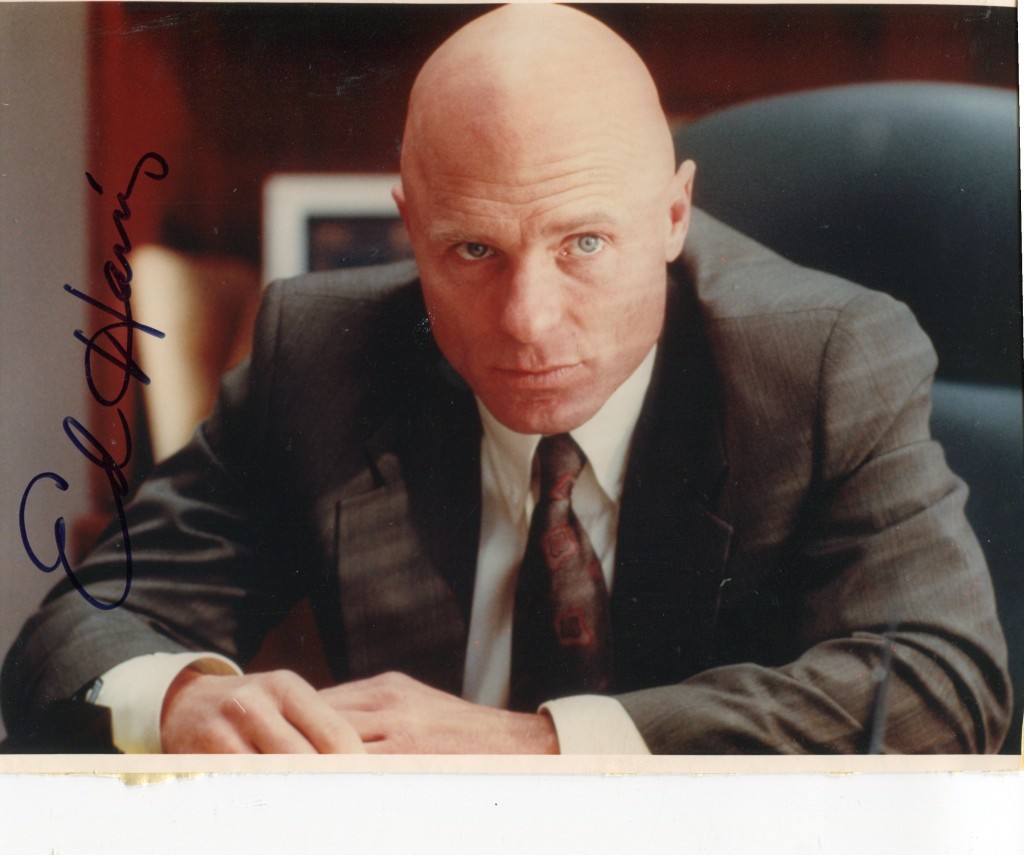
Ed Harris was born in 1950 in New Jersey. In 1983 he achiebed international recognition for his part in “The Right Stuff”. He went on to make such great movies as “Paris Trout”, “Places in the Heart”, “The Truman Show” and “The Firm”. He is married to actress Amy Madigan.
TCM overview:
Largely associated with stoic, hardened characters, actor Ed Harris went on to impress with a wide array of diverse performances in dozens of acclaimed films. Following a series of low-budget genre movies, Harris gained notoriety with his turn as legendary astronaut John Glenn in “The Right Stuff” (1983). Despite the accolades, it took several years before the actor landed another memorable role, which finally came when he was cast in James Cameron’s ambitious undersea adventure “The Abyss” (1989). Reaping the rewards of his new A-list status, Harris vacillated between literary character work in such acclaimed endeavors as “Glengarry Glenn Ross” (1992) and rousing crowd-pleasers like the NASA docudrama “Apollo 13” (1995). The versatile actor proved just as at home with pyrotechnic blockbusters like Michael Bay’s actioner “The Rock” (1996) as he was in more heady material, such as the Jim Carrey vehicle “The Truman Show” (1998). Harris later astounded audiences as both the director and star of the enthralling biopic “Pollock” (2000), which he followed with equally heralded supporting work in the dramas “A Beautiful Mind” (2001) and “The Hours” (2002). Incredibly dexterous, he played wildly divergent characters in the small town drama “Empire Falls” (HBO, 2005) and the shocking “A History of Violence” (2005). He returned to the director’s chair once more to helm the sweeping western “Appaloosa” (2008), cementing his reputation as a deft cinematic storyteller. One of the finest American actors of his generation, Harris’ artistic reputation and professional résumé knew few equals.
Born on Nov. 28, 1950 in Tenafly, NJ, Harris was raised by his father, Robert, a former singer-turned-bookseller, and his mother, Margaret, a travel agent. Growing up in a middle class Presbyterian home, Harris was captain of the Tenafly High School Tigers football team during his senior year. After graduating in 1969, he played football for Columbia University, but dropped out in 1971 to attend Oklahoma State University, where he made his professional debut as King Arthur in a Jewel Box Theater production of “Camelot.” Harris left OSU to major in theater at the California Institute of the Arts, where he finally earned his Bachelor of Fine Arts in 1975. From there, he quickly earned a reputation for his talent and intensity, namely in productions of “A Streetcar Named Desire” and “The Grapes of Wrath.” Meanwhile, Harris made his onscreen debut in the made-for-television miniseries, “The Amazing Howard Hughes” (CBS, 1977), then appeared in his first feature with a small part as a pathology resident in “Coma” (1978), a conspiracy thriller about strange happenings at a Boston hospital.
Following more supporting turns on “The Seekers” (syndicated, 1979) and “The Aliens Are Coming” (NBC, 1980), Harris had his first leading role in George Romero’s “Knightriders” (1980), playing the leader of a motorcycle gang who hits upon a get-rich-quick scheme of dressing like the Knights of the Round Table and performing at local renaissance fairs. Three years later, he emerged as a star with the one-two punch of the laconic cowboy with a troubled past and uncertain future in Sam Shepard’s off-Broadway hit “Fool for Love” and a stalwart turn as astronaut John Glenn in “The Right Stuff” (1983), Philip Kaufman’s epic drama about the dawn of the U.S. space program. Based on Tom Wolfe’s novel of the same name, “The Right Stuff” was lauded for its epic scope and sterling performances. While the expected accolades for his performance as Glenn failed to materialize, Harris nonetheless became an actor in demand. After a charismatic supporting role as Goldie Hawn’s soldier husband in “Swing Shift” (1984), Harris made a strong impression as a cheating spouse in “Place in the Heart” (1984). The latter marked the actor’s first screen pairing with Amy Madigan, whom he married before they headlined Louis Malle’s “Alamo Bay” (1985).
Also in 1985, Harris turned in a strong, believable performance as hard-drinking, good ole Southern boy Charlie Dick who woos and weds ascendant star Patsy Cline (Jessica Lange) in “Sweet Dreams.” The actor returned to his stage roots to make his Broadway debut opposite Judith Ivey as the stern, but loving father in George Furth’s autobiographical “Precious Sons” (1986), for which he earned critical praise and a Tony Award nomination. Back on the small screen, Harris played a conscience-ridden attorney who quits the profession after getting a string of guilty clients off the hook, only to be brought back by his mistress (Roxanne Hart) for one more case, this time involving a truly innocent man (Darrell Larson) accused of killing an undercover cop, in the HBO original movie, “The Last Innocent Man” (1987). Harris next starred in the little-seen “Walker” (1987), Alex Cox’s odd biopic of the 19th-century adventurer William Walker who declared himself president of Nicaragua, only to wind up a victim of his own hubris and overreaching ambition that resulted in widespread repression. The actor offered an intense portrait of a real-life soldier of fortune who bore more than a passing resemblance to Oliver North, who was then dominating the news.
In James Cameron’s big-budgeted underwater spectacle “The Abyss” (1989), Harris provided the anchor as the foreman of a civilian crew – which includes his estranged wife (Mary Elizabeth Mastrantonio) – tapped to rescue a U.S. nuclear submarine, only to discover the crash was caused by an extraterrestrial spacecraft containing an alien species. It was during this very difficult shoot, where the actors and crew were often submerged for hours underwater, that Harris famously declared he would never again work with Cameron, after the two butted heads more than once. In a return to the small screen, Harris starred in “Paris Trout” (Showtime, 1991), playing a lawyer hired to defend an unrepentant racist (Dennis Hopper) who finds himself drawn to his client’s wife (Barbara Hershey). In “Running Mates” (HBO, 1992), Harris was a bachelor presidential candidate who romances a widowed children’s author (Diane Keaton) who hates politics. Both projects allowed Harris to demonstrate a light, almost playful side that enhanced his standing as an unlikely comedic actor. Harris was firing on all cylinders in “Glengarry Glen Ross” (1992), the big screen adaptation of David Mamet’s incendiary play about a group of low-rent real estate agents. Harris played David Moss, a loudmouth who tells his down-and-out colleague (Alan Arkin) about his plan to steal the coveted Glengarry leads from their office, only to discover that an older, more desperate coworker (Jack Lemmon) beat him to it. Though the accolades went in large part to co-star Al Pacino for his fiery performance, Harris more than held his own in a cast that also included Kevin Spacey, Jonathan Pryce and Alec Baldwin.
After playing a frustrated FBI agent smoking out corruption in “The Firm” (1993), Harris was on the other side of the law as a creepy serial killer in “Just Cause” (1995). He then stood out in the ensemble of Ron Howard’s “Apollo 13” (1995), playing NASA mission control flight director Gene Krantz, a performance that earned him his first Oscar nomination. A turn as Watergate co-conspirator E. Howard Hunt in “Nixon” (1995) was followed by playing a military hero who precipitates a hostage crisis at Alcatraz in “The Rock” (1996). Following a performance as a homicide detective investigating a murder involving the president (Gene Hackman) in “Absolute Power” (1997), he received nearly unanimous praise and a second Best Supporting Actor Oscar nomination as the God-like creator-director of a popular 24-hour-a-day TV series in “The Truman Show” (1998). Harris again showed his softer side as a man caught between his ex-wife (Susan Sarandon) and his new girlfriend (Julia Roberts) in the comedy-drama “Stepmom” (1998), which he followed by playing a charismatic priest who investigates reported miracles on behalf of the church in the little-seen drama, “The Third Miracle” (1999).
In 2000, Harris realized a decade long dream, directing and starring in “Pollock,” an independently financed drama about abstract painter Jackson Pollock. Ever since his own father had sent him two biographies of the artist, the actor harbored a desire to portray Pollock on screen. The resulting motion picture, which premiered at the 2000 Venice Film Festival and was selected as the centerpiece of the 2000 New York Film Festival, earned positive critical reviews and Harris’ first Best Actor nod at the Academy Awards. Harris continued to add to his growing galaxy of film performances as the new millennium unfolded, portraying a German assassin sent to take out a Russian sharpshooter (Jude Law) in the WWII drama “Enemy of the Gates” (2001). After playing a high-ranking intelligence officer dealing with a schizophrenic mathematician (Russell Crowe) in “A Beautiful Mind” (2001), Harris co-starred opposite Meryl Streep in “The Hours” (2002) as an author dying of AIDS. In this film, Harris delivered another of his more riveting performances, as his character struggles with his disease, his relationships with the crucial women in his life and his reasons for continuing to stay alive. His captivating turn was rewarded with an Academy Award nomination for Best Supporting Actor – his third in that category and fourth nod overall.
The following year, he reunited with Nicole Kidman as her abusive ex-husband in a supporting role in “The Human Stain” (2003), then was seen as a southern football coach-turned-town hero in the feel-good hit “Radio” (2003), which starred Cuba Gooding, Jr. as a mentally challenged high school student who is allowed to help out with the team, but struggles to earn his welcome. Harris next appeared in the humorous, poignant HBO miniseries “Empire Falls” (HBO, 2005) as New England restaurateur Miles Roby, for whom the promising opportunities of youth have given way to the demands of family obligations, especially those concerning his cantankerous father (Paul Newman) and impressionable daughter (Danielle Panabaker). Unable to escape the town or the dominating shadow of his employer (Joanne Woodward), who owns the restaurant he runs, Miles copes with a recent divorce from his wife (Helen Hunt) while piecing together the shared events that shaped their lives. “Empire Falls” was nominated for a slew of Emmy Awards, including Harris for Outstanding Lead Actor in a Miniseries or Movie.
Harris delivered a standout supporting turn in director David Cronenberg’s masterful thriller, “A History of Violence” (2005). Harris played the menacing and acerbic Carl Fogarty, a shadowy, scarred figure who arrives in small town Indiana to confront a loving, rock-solid father and husband (Viggo Mortensen) whose brief notoriety after foiling a violent robbery attracts Fogarty’s attention and has him insisting he recognizes the man from a secret, bloody past 20 years earlier. Harris’ perfectly measured mix of threat and gallows humor was one of the highlights of a superbly tense film. After depicting Ludwig von Beethoven at the time he composed his famed “Ninth Symphony” in “Copying Beethoven” (2006), Harris was a descendant of Lincoln assassin, John Wilkes Booth, who implicates treasure hunter Ben Gates’ (Nicolas Cage) great-great grandfather after discovering missing pages from Booth’s diary in the adventure sequel “National Treasure: Book of Secrets” (2007). He returned to the director’s chair following an eight year absence to direct “Appaloosa” (2008), an old-school Western that showcased Harris as a U.S. marshal tasked to clean up a New Mexico territory city after a band of outlaws murdered the previous law enforcement.
As an actor Harris continued to deliver impressive work in a plethora of distinct and varied films. In the based-on-fact sports drama “Touching Home” (2010) he played a stern patriarch trying to reconnect with his adult sons, while in the WWII adventure “The Way Back” (2010), he played a cynical American attempting to escape from an isolated Siberian gulag. He then reteamed with his “Beautiful Mind” co-star Jennifer Connelly for a pair of ventures, starting with the religious satire “Salvation Boulevard” (2011) and followed by the psychological-drama “Virginia” (2012). Although the mainstream heist-thriller “Man on a Ledge” (2012) failed to set the box office on fire, Harris’ uncanny turn as 2008 Republican presidential candidate John McCain in “Game Change” (HBO, 2012) proved to be one of the more talked-about cable events of the year. Co-starring Julianne Moore as Sarah Palin, the telefilm was based on the political tell-all by John Heilemann and Mark Halperin and focused on the ultimately unsuccessful McCain-Palin ticket run for the White House. Harris’ exemplary performance was widely hailed by all and earned him a Golden Globe win and an Emmy nomination for Outstanding Supporting Actor in a Miniseries or a Movie.
- Liam
- No Comments
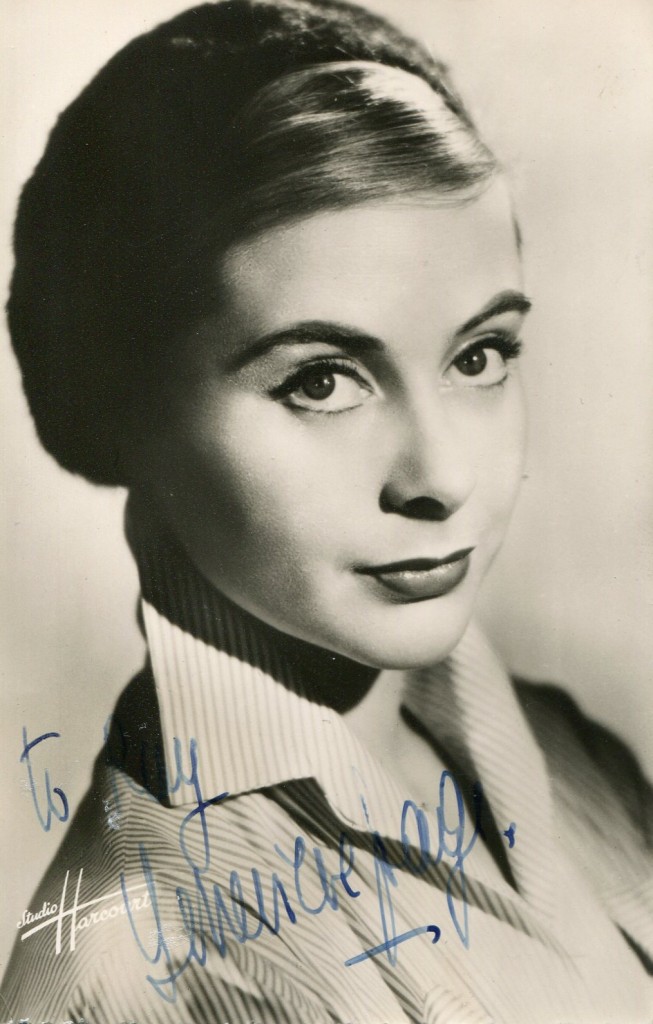
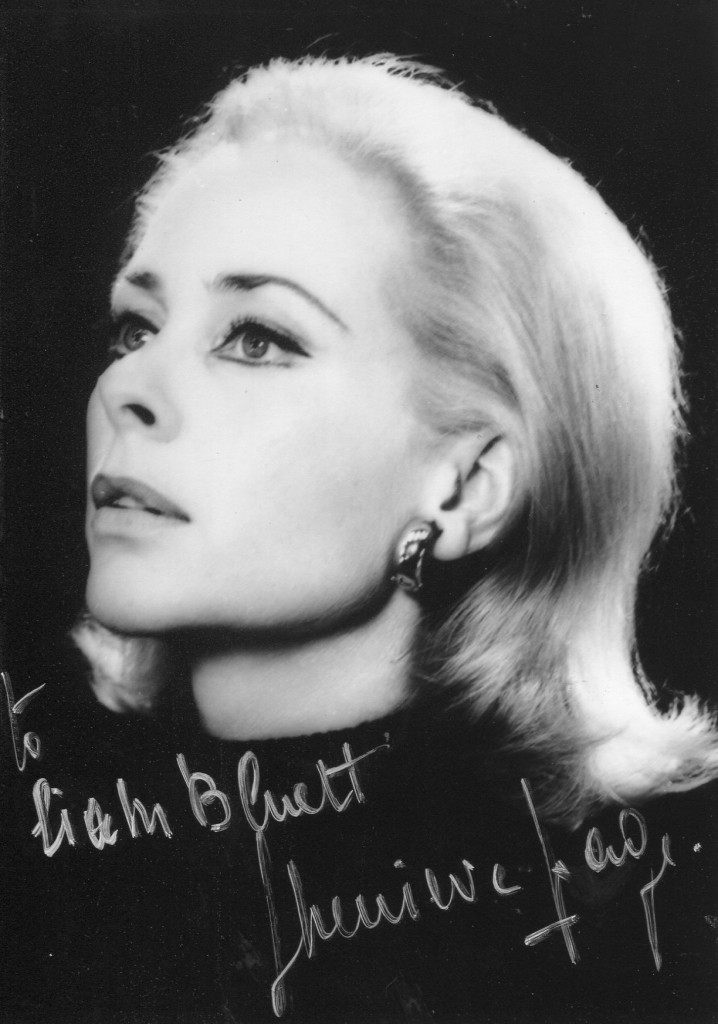
Genevieve Page was born in 1927 in Paris. She made her film debut in 1951 in “Fanfan la Tulipe” with Gerard Philipe. By the late 1950’s she was in Hollywood making such movies as “Song Without End” and “Youngblood Hawke”. She retired from acting in 2003.
IMDB entry:
Geneviève Page was born on December 13, 1927 in Paris, France as Genevieve Bronjean. She is an actress, known for Belle de Jour (1967), El Cid (1961) and The Private Life of Sherlock Holmes (1970). She has been married to Jean-Claude Bujard since 1959. They have two children. Member of the jury at the Cannes Film Festival in 1964 Had a long and distinguished career on stage and was nominated for the Molière Award (the French equivalent of the Tony Award) in 1996 for her role in “Colombe”. Winner of the 1980 “Prix de la meilleure comédienne du syndicat de la critique” for her role in “Les Larmes amères de Petra von Kant” at the Théâtre national de Chaillot in Paris. Starring in “Les Grandes Forêts” on stage at the Théâtre des Bouffes du Nord in Paris.
The above IMDB entry can also be accessed online here.
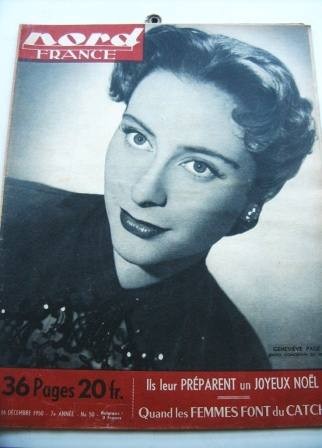
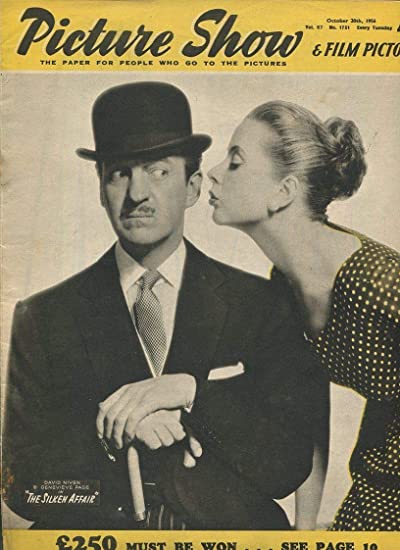
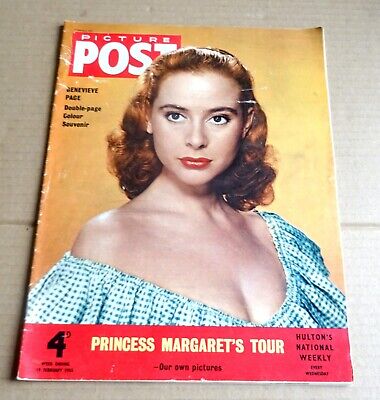
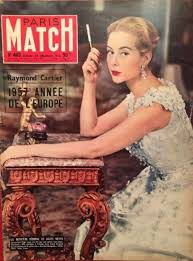
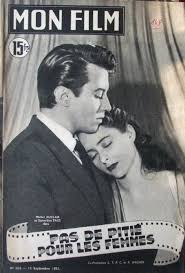
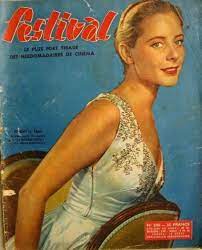
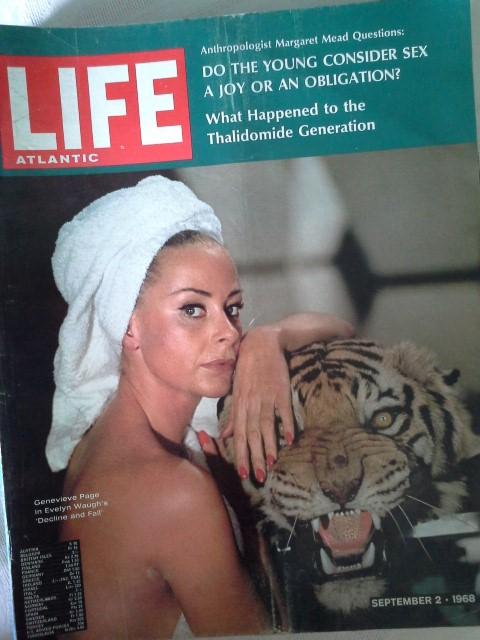
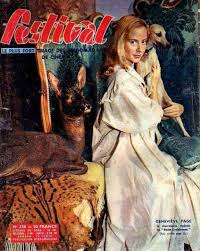
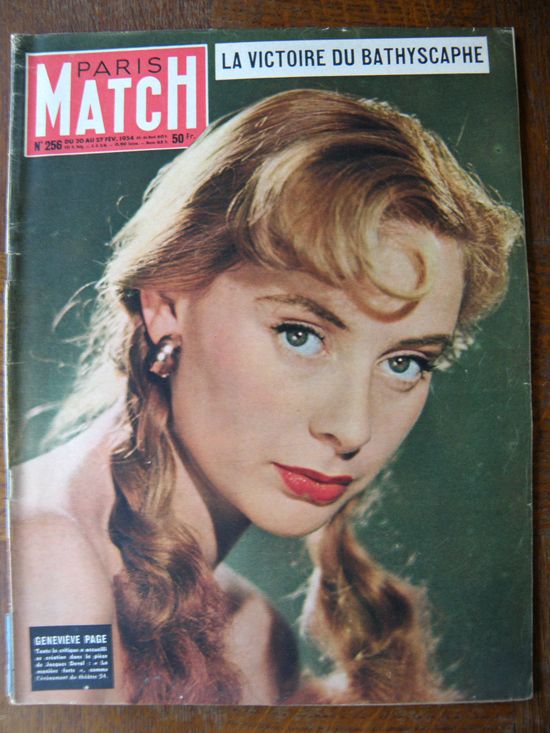
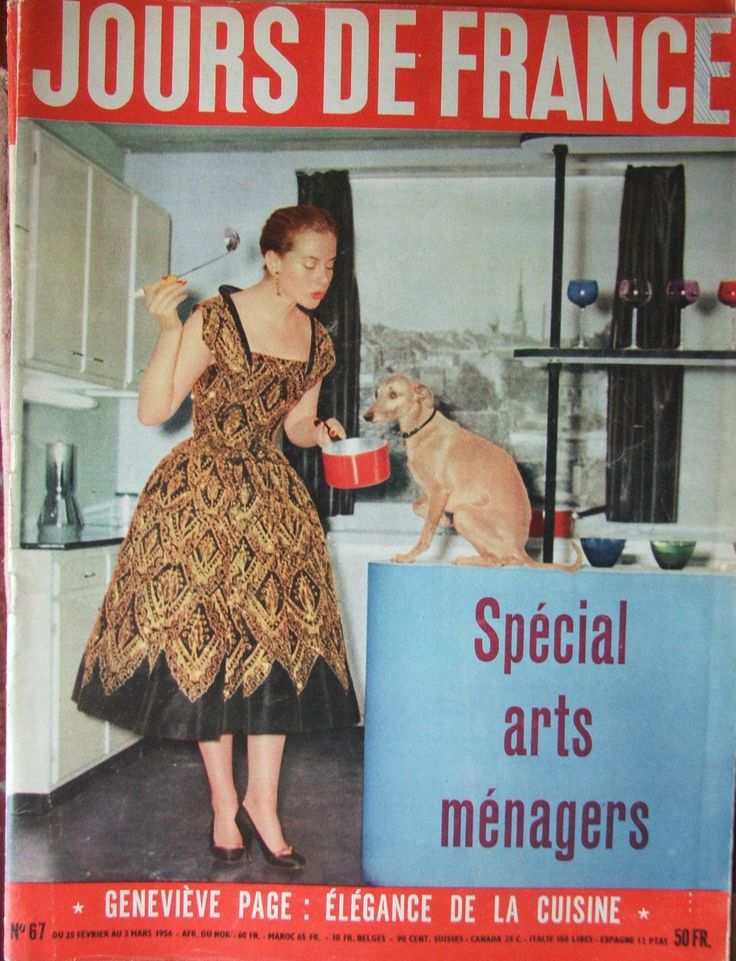
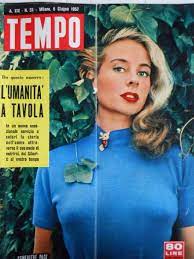
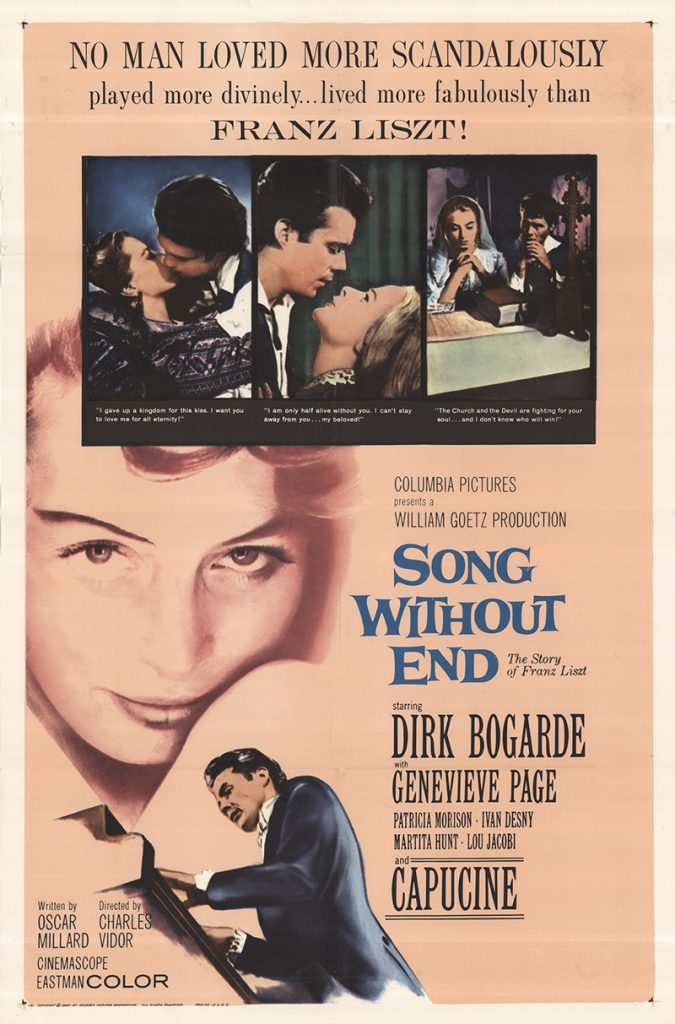
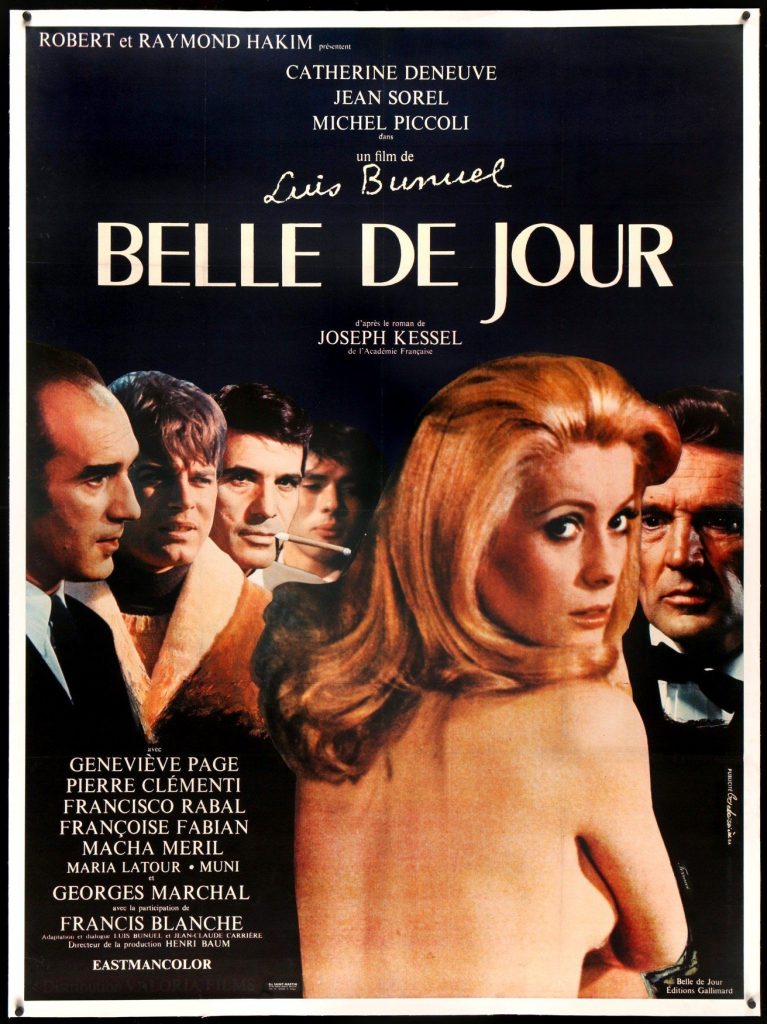
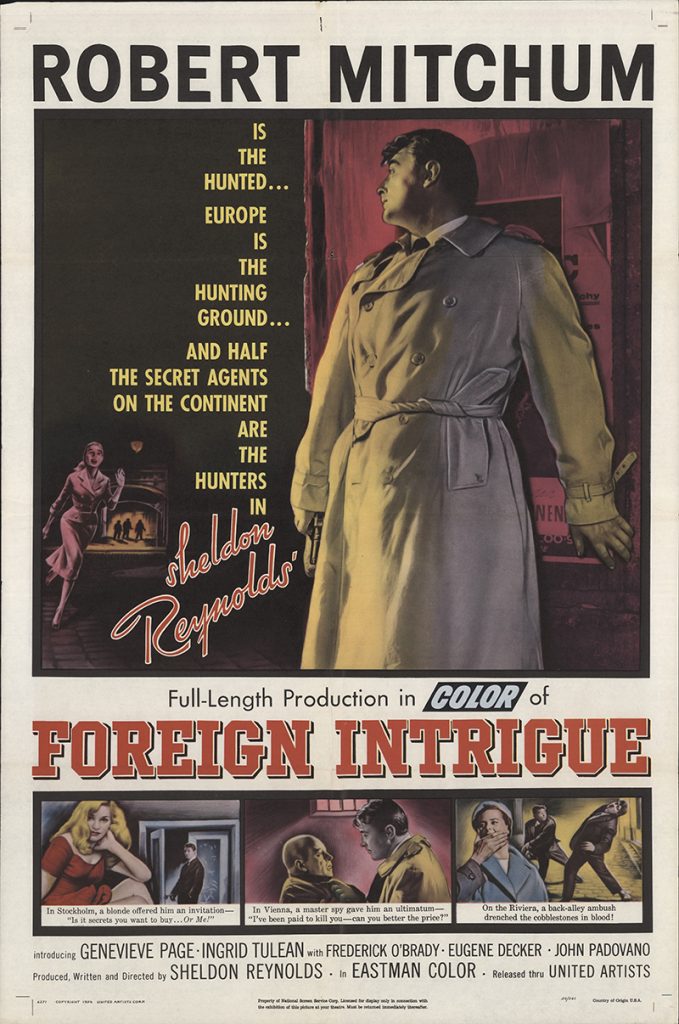
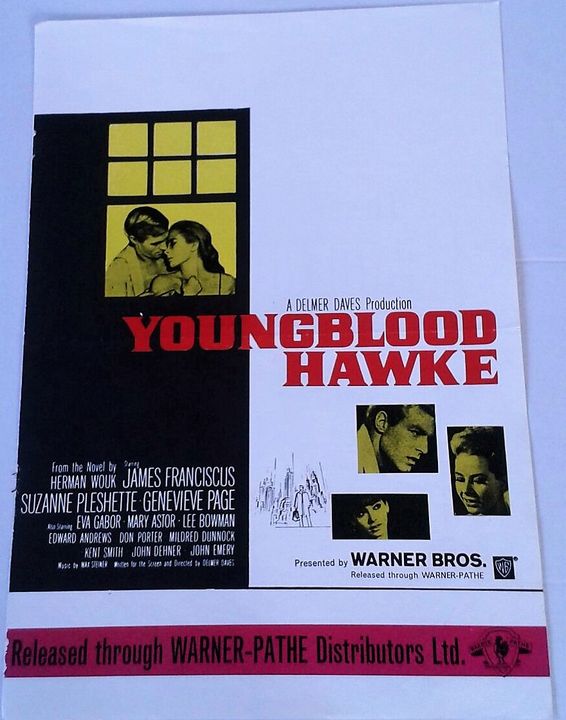
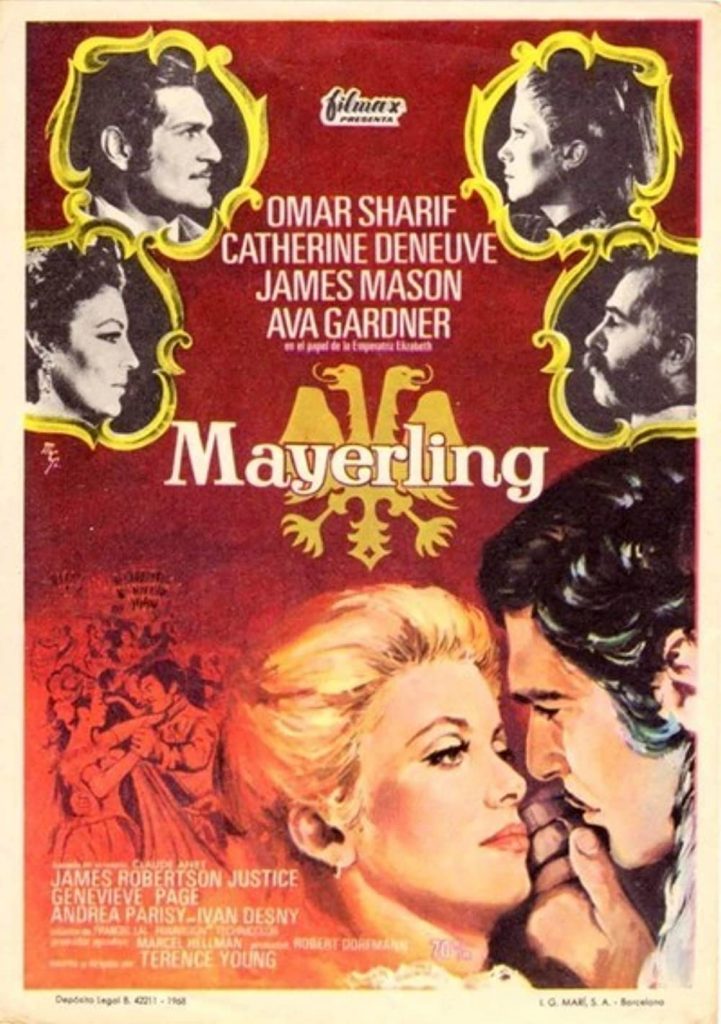
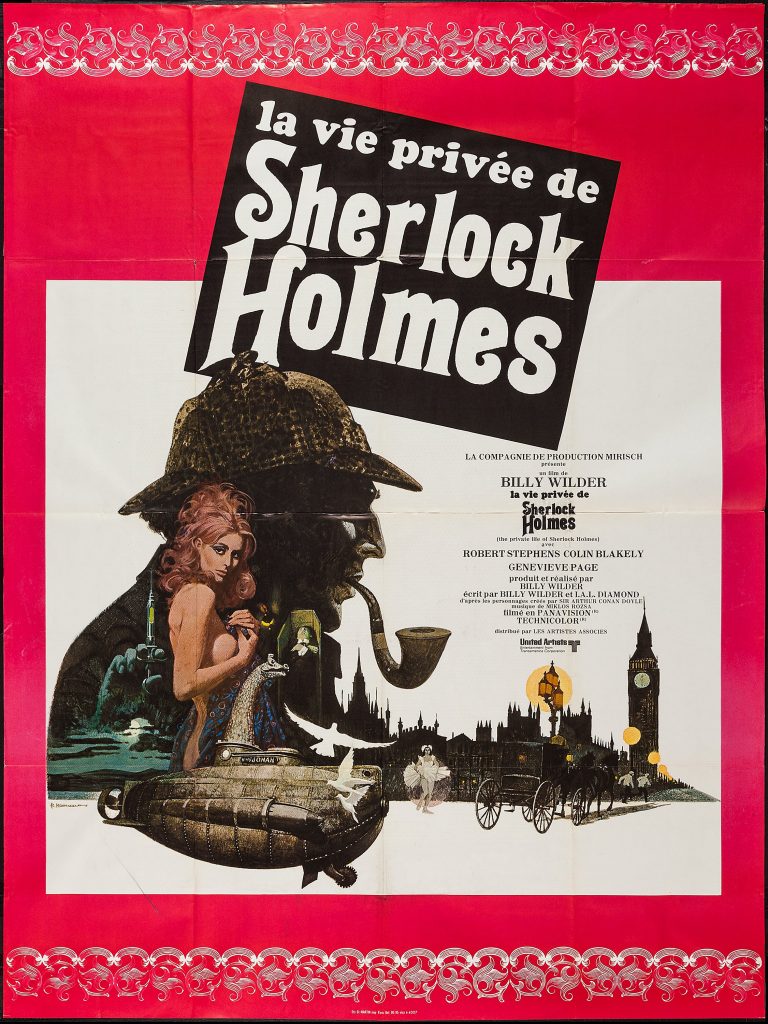
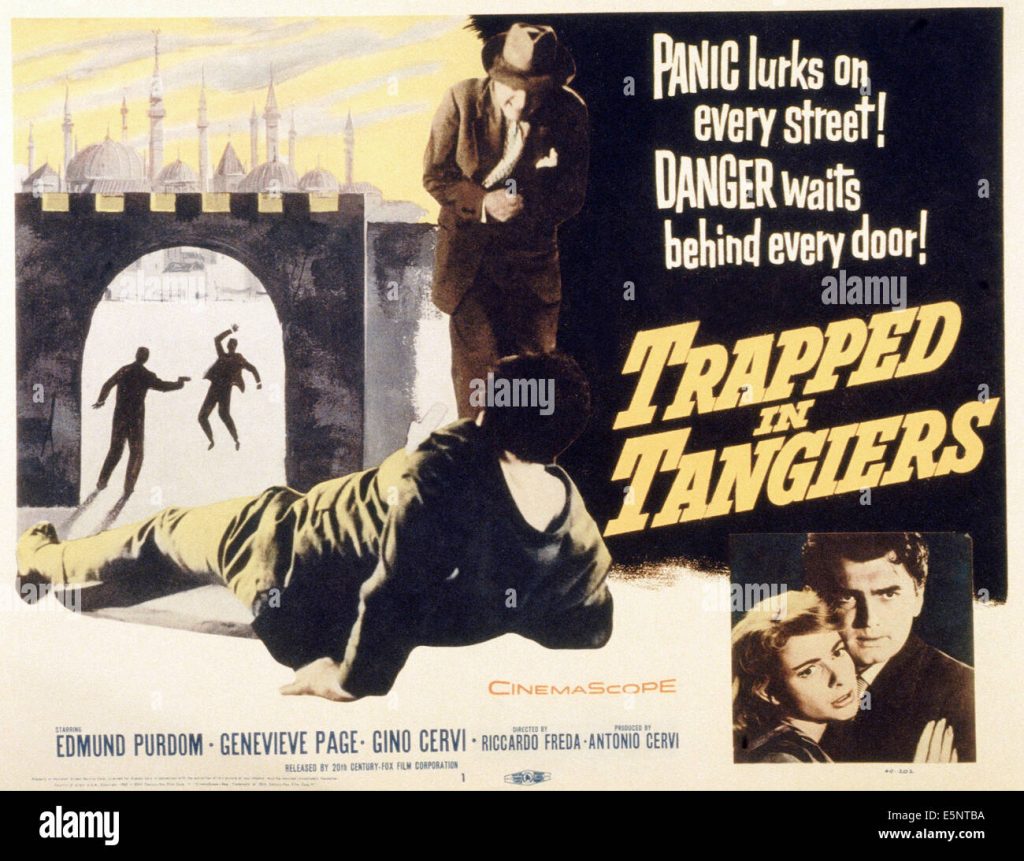
- Liam
- No Comments
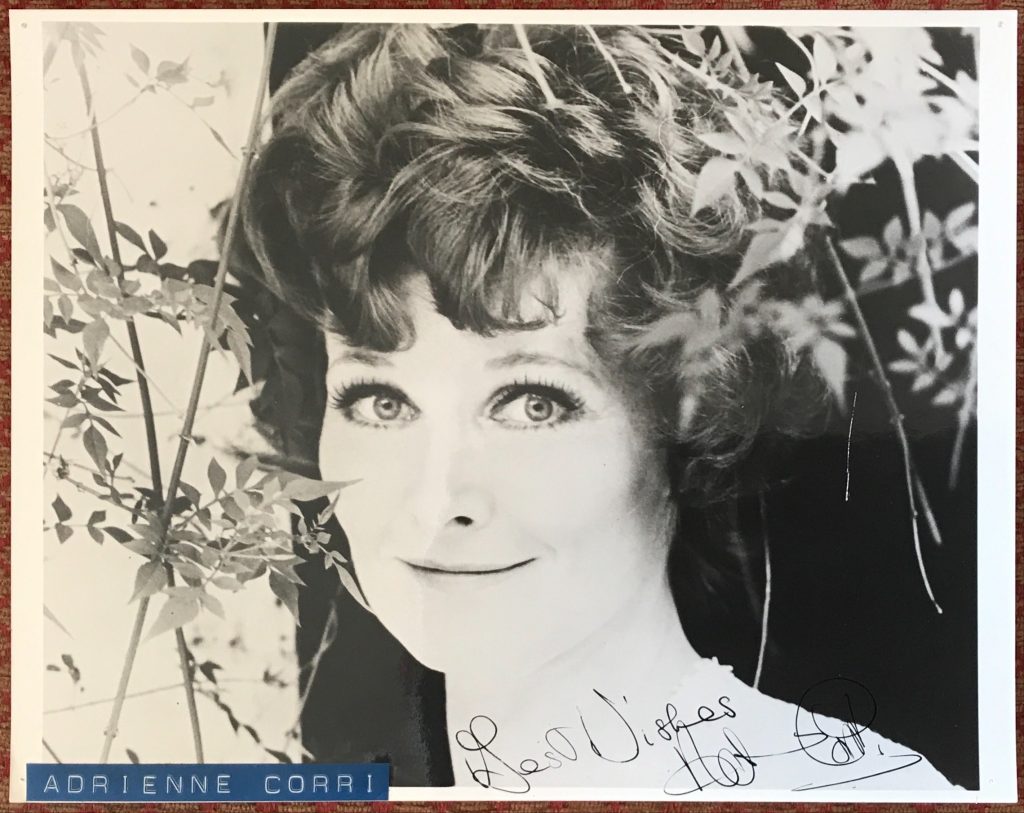
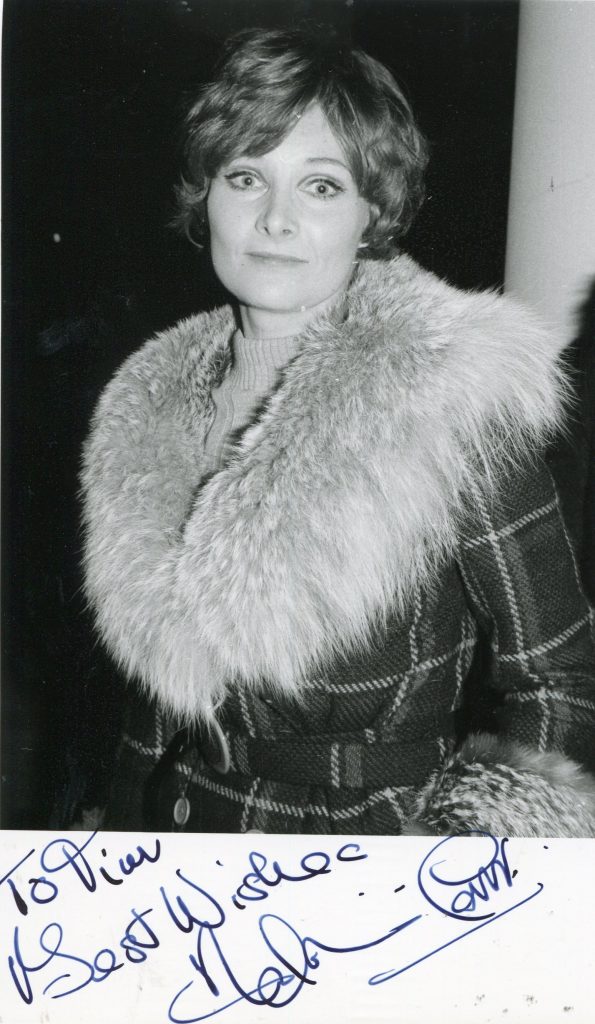
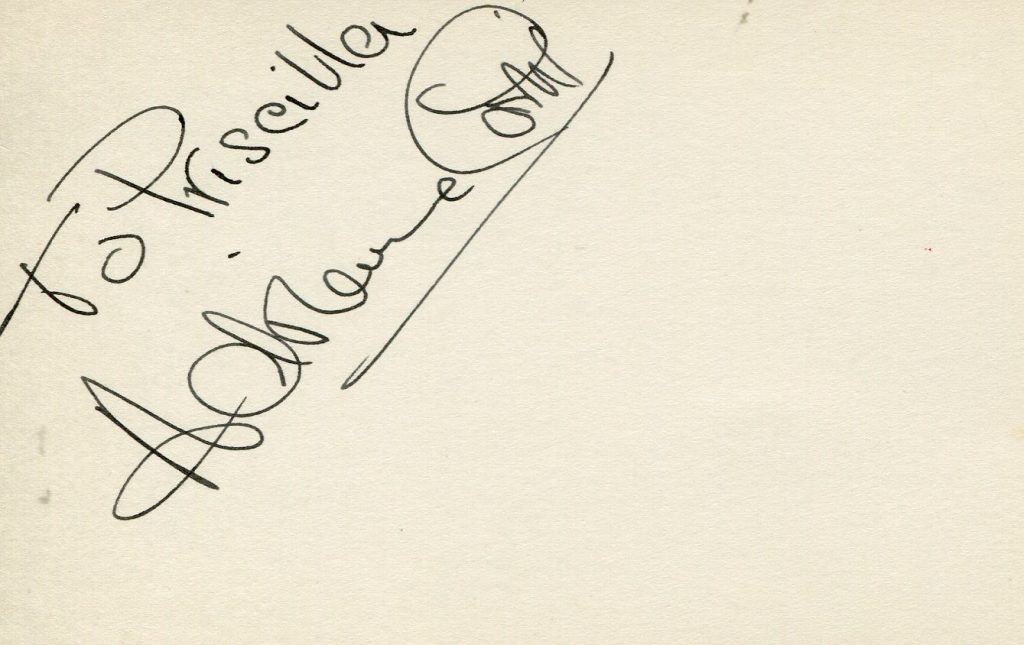
Adrienne Corri
Adrienne Corri was born in 1931 Glasgow. Despite having significant roles in many films, Adrienne Corri is likely to be remembered for one of her smaller parts, that of Mrs. Alexander, the wife of the writer Frank Alexander, in the 1971 A Clockwork Orange. . Though the scene lasts barely three minutes Corri appeared in many excellent films, notably as Valerie in Jean Renoir‘s The River (1951), as Lara’s mother in David Lean‘s Dr. Zhivago (1965) and in the Otto Preminger thriller Bunny Lake is Missing. She also appeared in a number of horror and suspense films from the 1950s until the 1970s including Devil Girl from Mars, The Tell-Tale Heart, A Study in Terror and Vampire Circus. She also appeared as Therese Duval in Revenge of the Pink Panther. The range and versatility of her acting is shown by appearances in such diverse productions as the 1969 science fiction movie Moon Zero Two where she played opposite the ever dependable character actor Sam Kyd (Len the barman), and again in 1969, in Twelfth Night, directed by John Sichel, as the Countess Olivia, where she played opposite Alec Guinness (Malvolio).
Her numerous television credits include Angelica in Sword of Freedom (1958), Yolanda in The Invisible Man episode “Crisis in the Desert”, a regular role in A Family at War and You’re Only Young Twice, a 1971 television play by Jack Trevor Story, as Mena in the Doctor Who story “The Leisure Hive” and guest starred as the mariticidal Liz Newton in the UFO episode “The Square Triangle”. She also was in two episodes of “Danger Man,” the first being the well-known surreal “The Ubiquitous Mr. Lovegrove,” (1965) as assistant to Mr. Alexander, Elaine, as well as “Whatever Happened To George Foster,” (1965) in which she played Pauline, a journalist acquaintance of “John Drake.” In 1979 she returned to Shakespeare when she appeared in the BBC Shakespeare production of Measure for Measure, as the earthy, cheroot-smoking keeper of a bawdy house, Mistress Overdone.
She had a major stage career, appearing regularly both in London and in the provincial theaters. There is a story that, when the audience booed on the first night of John Osborne‘s The World of Paul Slickey, Corri responded with her own abuse: she raised two fingers to the audience and shouted “Go fuck yourselves”.[3] Note that Billington only repeats the story, without confirming or providing any evidence of its truth. During the making of Moon Zero Two, she poured a glass of iced water inside James Olson’s rubber space suit, in which uncomfortable state he was obliged to wear it for the remained of the day’s shooting.[4] (as per Wikipedia)
She died in March 2016.
“Guardian” obituary by Ronald Bergan in March 2016:
Adrienne Corri, who has died aged 85, was an actor of considerable range and versatility whose career ranged from the high – with Shakespearean roles alongside Ralph Richardson and Alec Guinness – to the decidedly low, including appearances in many quota quickies and low-budget horror movies that showcased her striking red-haired beauty. Although seen regularly on big and small screens in the 1950s and 60s, Corri is mainly remembered for her participation in the short but notorious gang rape scene from Stanley Kubrick’s A Clockwork Orange (1971). Despite complaining to Kubrick about the multitude of takes, Corri retained a friendship with the director for a short while afterwards. One Christmas she gave him a pair of bright red socks, a reference to the scene, in which she is left naked but for such garments.
She was born Adrienne Riccoboni, with an Italian father, in Edinburgh and while still in her teens attended Rada. She made her first appearance as a sexy schoolgirl in The Romantic Age (1949), a blend of prurience and prudery typical of certain British comedies of the time. After a walk-on role as a young Christian girl in Quo Vadis (1951), shot in Rome, she was off to India to appear in her best film, Jean Renoir’s The River (1951), a poetic evocation of life among the British in post-second world war Bengal. Corri, her red hair standing out in splendid Technicolor, is the most mature, voluptuous and spoiled of three teenage girls, all suffering adolescent pangs for a young war hero. In 1953 Picturegoer magazine described Corri as having “no nice-little-girl-next-door nonsense about her”.
The first of her three-and-a-half Hammer movies (the half being the second part of Journey into Darkness, 1968), was The Viking Queen (1967), a silly sword-and-sandal epic, in which Corri was an anti-Roman pro-druid princess who snaps and snarls and goes to war with relish. In Moon Zero Two (1969), a lunar western, she plays a sheriff on the moon, with holsters built into her thigh-length plastic boots. Vampire Circus (1972) sees Corri as a fiery gypsy with evil intent who runs the supernatural circus playing in a 19th century European town. Hammer, the “House of Horror”, influenced other British productions, some of which featured Corri. In Devil Girl from Mars (1954), she played a spunky Scottish barmaid who tries to keep her man from being whisked away to Mars by the eponymous alien for breeding purposes. Corridors of Blood (1958) shows Corri as a despicable lowlife character getting Boris Karloff to write false death certificates for the people she and her partner have killed.
In The Tell-Tale Heart (1960), adapted from Edgar Allan Poe’s story, a timid librarian is obsessed by Corri, the flower seller who lives across the street and who, like many horror-movie heroines, has a tendency to undress by a window without closing the curtains. There were two films in which Corri bravely disguised her beauty: she played a disfigured prostitute in A Study in Terror (1965), which pitted Sherlock Holmes against Jack the Ripper, and in Madhouse (1974), she was bald and wore a mask to hide her face, mutilated in a car accident. Her character also talks to spiders as if they were her babies.
More prestigious, but less interesting, were her minor roles in three of her friend Otto Preminger’s movies, Bunny Lake Is Missing (1965), Rosebud (1975) and The Human Factor (1979), and as the mother of Lara (Julie Christie) in David Lean’s Dr Zhivago (1965). Among her dozens of television parts were Milady de Winter in the BBC series of The Three Musketeers (1954) and various appearances in episodes of ABC’s Armchair Theatre (1956-60).
She featured in several BBC Plays of the Month, in one of which she was Violet in George Bernard Shaw’s Man and Superman (1968), alongside Maggie Smith, and she played Olivia in ITV’s Twelfth Night (1969), in a cast that included Richardson (Toby Belch), Guinness (Malvolio), Joan Plowright (Viola) and Tommy Steele (Feste). In Measure for Measure (1979) she was the cheroot-smoking bawdy-house keeper Mistress Overdone, and she was last seen in two episodes of Lovejoy (1992). Corri also gained acclaim on stage – she was part of the Old Vic company (1962-63), and appeared on Broadway in Jean Anouilh’s The Rehearsal (1963). In 1959, she had a leading role in John Osborne’s The World of Paul Slickey, a bitter musical satire on the tabloid press, which received the ire of critics and public alike. On the first night, Corri is reported to have given the booing audience a two-fingered salute.
In addition to her acting, Corri wrote The Search for Gainsborough (1984), an excellent art “whodunit” in diary form in which she set out to prove that an unattributed portrait of David Garrick that she came across in a run-down theatre in Birmingham was an early work by the young Thomas Gainsborough.
She had an almost decade-long, tempestuous marriage to the actor Daniel Massey, which ended in 1968. “We were agonisingly incompatible, but we had an extraordinary physical attraction,” claimed Massey.
Corri is survived by a son, Patrick, and a daughter, Sarah, from a relationship in the mid-50s with the film producer Patrick Filmer-Sankey.
• Adrienne Corri (Adrienne Riccoboni), actor, born 13 November 1930; died 13 March 2016
- Liam
- No Comments

Ronald Bergan’s “Guardian” obituary:
Dennis Hopper, who has died of cancer aged 74, was one of Hollywood’s great modern outlaws. His persona, on and off the screen, signified the lost idealism of the 1960s. There were stages in Hopper’s career when he was deemed unemployable because of his reputation as a hell-raiser and his substance abuse. However, he made spectacular comebacks and managed to kick his dependence on alcohol and cocaine.
Born in Dodge City, Kansas, Hopper, whose father was a post-office manager and mother a lifeguard instructor, expressed an interest in painting and acting at a young age. While still in his teens, he appeared in repertory at Pasadena Playhouse, California, and studied acting with Dorothy McGuire and John Swope at the Old Globe theatre, San Diego.
The year of his 19th birthday, 1955, was extraordinary. Not only did Hopper have substantial parts in three television dramas, but he was cast in supporting roles in James Dean‘s last two films: Rebel Without a Cause, and Giant (released in 1956). The two actors became friends over the few months before Dean, whom Hopper idolised, was killed in a car accident aged 24.
In Rebel Without a Cause, Hopper is the youngest and slightest member of the juvenile delinquent gang that provokes Dean. In Giant, he gave a sensitive performance as the son of Texan oil millionaire Rock Hudson and Elizabeth Taylor; he marries a Mexican girl and wants to “go north” to become a doctor – decisions against his father’s wishes. Although Hopper appeared only briefly with Dean in both movies, the latter had a huge influence on him.
Hopper brought some moody Method mannerisms to bear on his following roles, mostly as callow, trigger-happy villains in westerns, such as Billy Clanton in Gunfight at the OK Corral (1956) – “I don’t know why I get into gunfights. I guess sometimes I just get lonely” – and From Hell to Texas (1958), on which he got into a confrontation with director Henry Hathaway, refusing to take direction for several days. He was also a grumpy, childish Napoleon in the infamous, star-studded The Story of Mankind (1957) and the leader of a street gang, dubbed “Cowboy”, in Key Witness (1960).
In the 1960s, Hopper, who alienated several veteran directors and producers, was pronounced difficult, argumentative and violently temperamental. However, he continued to get work, mostly in minor baddie roles, in major films including Cool Hand Luke (1963), The Sons of Katie Elder (1965) and True Grit (1969). He also turned up in the weird space vampire film Queen of Blood (1966), in which he played a clean-cut astronaut who has the blood sucked out of him. The executive producer on the film was Roger Corman, who had just begun his cycle of dope and biker movies, and cast Hopper with Peter Fonda in the seminal acid flick The Trip (1967). The duo together conceived, wrote, with Terry Southern, raised the finance for, and starred in the alienated- youth road movie Easy Rider (1969), with Hopper directing.
Made for $400,000, the film’s combination of drugs, rock music, violence, a counter-culture stance and motorcycles as ultimate freedom machines caught the imagination of the young, made pop icons of Hopper and Fonda on their bikes and took over $16m at the box office. This rose to more than $60m worldwide in the next three years. It also brought Hopper, Fonda and Southern a best screenplay Oscar nomination. Easy Rider, which led to a stream of tacky, imitative pictures with equally loud rock soundtracks, retains legendary status in Hollywood lore, although these self-pitying “flower children” of the 60s now seem as dated as the “bright young things” of the 1920s.
Hopper, meanwhile, was out of control. His eight-year marriage to Brooke Hayward, the daughter of actor Margaret Sullavan, had ended in divorce. In 1970, he married Michelle Phillips, of the Mamas & the Papas, but it lasted eight days. (“The first seven days were pretty good,” Hopper once commented.) In the same year, a raving, naked, drug-fuelled Hopper was arrested while running around Los Alamos, New Mexico.
In 1971, following the success of Easy Rider, Hopper was bankrolled by Universal with $850,000 and given total creative control to make whatever kind of movie he wished. He decamped to Peru with a cast and crew for a self-penned, directed and edited meta-monstrosity, The Last Movie (1971). Starring Hopper as a stuntman with a Christ complex on the set of a western being directed by Samuel Fuller, the film, made for the stoned by the stoned, was stoned by the critics.
Before the film’s limited release, Hopper wrote and appeared in an autobiographical documentary, The American Dreamer (1971), which showed him editing The Last Movie at his home in Taos, New Mexico, spouting hippy philosophy, taking baths with women and shooting guns. This sealed his reputation as the most flipped-out man in the movies, and he spent the next 15 years in foreign films, personal projects, and low-budget arthouse or exploitation movies.
The quality of these veered wildly, but Hopper turned in one of his most memorable performances as Patricia Highsmith’s Tom Ripley character, who has the enigmatic, homicidal title role in Wim Wenders’s The American Friend (1977). High on drugs, he improvised much of his part of the photojournalist buzzing around Marlon Brando in Francis Ford Coppola’s Apocalypse Now (1979).
In 1980, Hopper directed his third feature, Out of the Blue, an effective piece of post-hippy American gothic, about a family well outside the mainstream. It focuses on a 15-year-old punk girl (Linda Manz) trying to survive in a world of drunks (Hopper plays an alcoholic father), drug addicts and rapists. Made in Canada, the picture was well received when it was released three years later, assisting Hopper’s reintegration into Hollywood.
In 1983, Hopper entered a drug rehabilitation programme. By then, according to Peter Biskind’s book Easy Riders, Raging Bulls, his cocaine intake had reached three grams a day, complemented by 30 beers, marijuana and Cuba Libres. After emerging relatively clean from the programme, he played another alcoholic father – this time to Matt Dillon – in Coppola’s Rumble Fish (1983), now a commanding elder statesman amid the brat-pack cast.
Hopper’s comeback was consecrated in 1986, with his astonishing portrayal of a psychopathic kidnapper in David Lynch‘s Blue Velvet. His performance, in which he inhales an unspecified gas and screams “Mommy” at Isabella Rossellini during bizarre sex scenes, became as much a conversation piece as the film itself. This role as a crazed, drug-dealing sadist was followed with an antithetically subdued and touching performance as an ashamed dad seeking redemption in Hoosiers in the same year. Hopper, who seemed to draw on his down-and-out years, was nominated for a best supporting actor Oscar.
Hopper appeared in three further films in 1986 – ranging from a leftwing media terrorist in Riders of the Storm to a mad ex-biker with his own strangely moral code in River’s Edge, and the former Texas Ranger who wants revenge for the chainsaw death of his brother in The Texas Chainsaw Massacre 2. He continued to be extremely busy in the following year, playing a Texan tycoon bumped off by his wife in Black Widow and Molly Ringwald’s father in The Pick-up Artist.
In 1988, Hopper directed Robert Duvall and Sean Penn in a violently realistic cops-versus-street gangs drama, Colors, released to a debate as to whether the film reflected or exacerbated gang conflicts in Los Angeles. A worse fate met his next directorial effort, Catchfire (1989), in which he starred with Jodie Foster as, respectively, kidnapper and responsive victim. Released in an edited version of which he did not approve, the film, at Hopper’s insistence, was attributed to Alan Smithee (the pseudonym for directors preferring to remain anonymous).
In Flashback (1990), as an erstwhile 60s radical activist gone underground, Hopper seems to be playing his own legend, drawing inspiration from his earlier characters. At one stage, he remarks, “It takes more than going down to your local video store and renting Easy Rider to become a rebel.”
This led to similarly offbeat performances, many of them variations on the smiling, charming, cold-blooded killer with a screw loose. He stood out in supporting roles in True Romance (1993) and the box-office smash Speed (1994), and his blackly humorous edge almost redeemed some of the mediocre thrillers he appeared in throughout the 90s, though little saved Chasers (1994), a leaden naval comedy, the seventh and last of the features he directed. In 2008, Hopper appeared in the TV series Crash, the spin-off from the Paul Haggis 2004 film, as a verbose, eccentric, down-on-his-luck music producer. Hopper proudly stated that it was the craziest character he had ever played.
Despite his radical persona, Hopper was a paid-up Republican, though he voted for Barack Obama in the 2008 election. In that year, he appeared in An American Carol, a flabby, liberal-bashing comedy starring rightwing actors such as Jon Voight, Kelsey Grammer and James Woods.
Hopper, who played an art dealer in the 1996 film Basquiat, was also an accomplished painter and sculptor, and a well-connected player on the American art scene. He was a skilled photographer whose subjects included Martin Luther King; fellow artists Ed Ruscha, Roy Lichtenstein and Robert Rauschenberg; and co-stars including Paul Newman and John Wayne. In 2007, he presented the Turner prize at Tate Liverpool.
He was married five times and is survived by four children: a daughter by Brooke Hayward; a daughter by Daria Halprin (the female lead in Antonioni’s Zabriskie Point); a son by Katherine LaNasa; and a daughter by Victoria Duffy, his widow.
• Dennis Lee Hopper, actor, photographer and painter, born 17 May 1936; died 29 May 2010
The above “Guardian” obituary can also be accessed online here.

- Liam
- No Comments




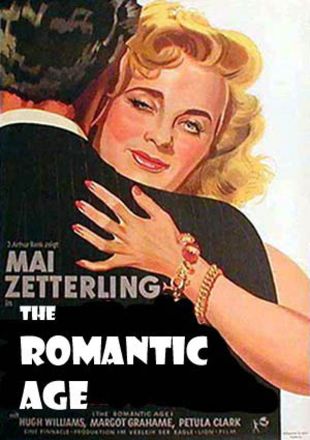
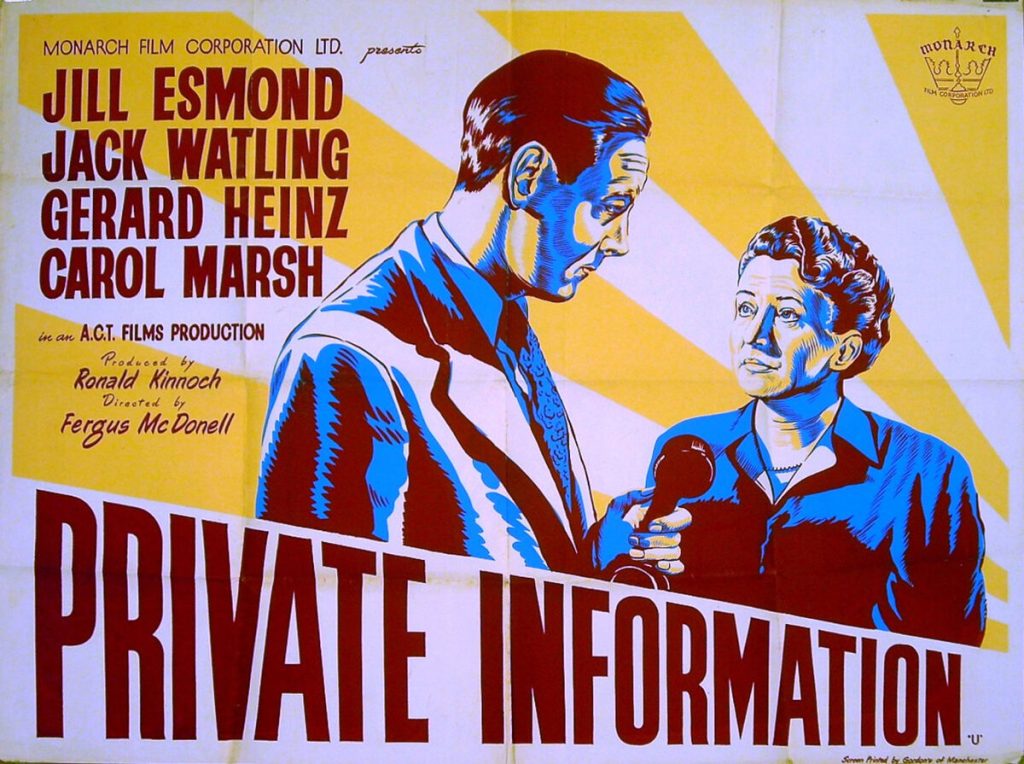
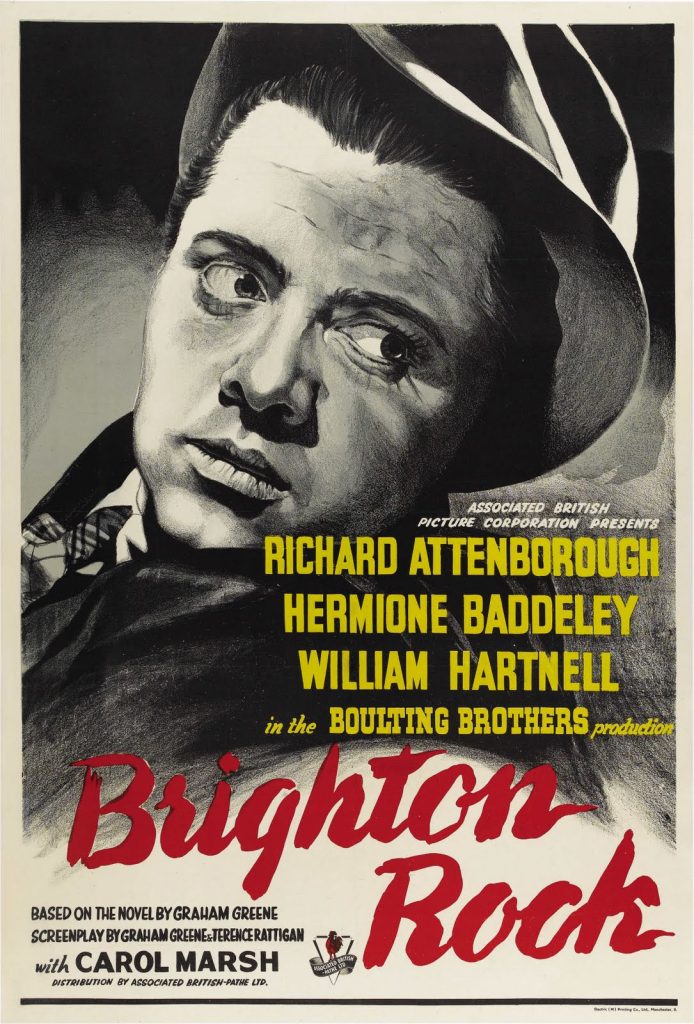


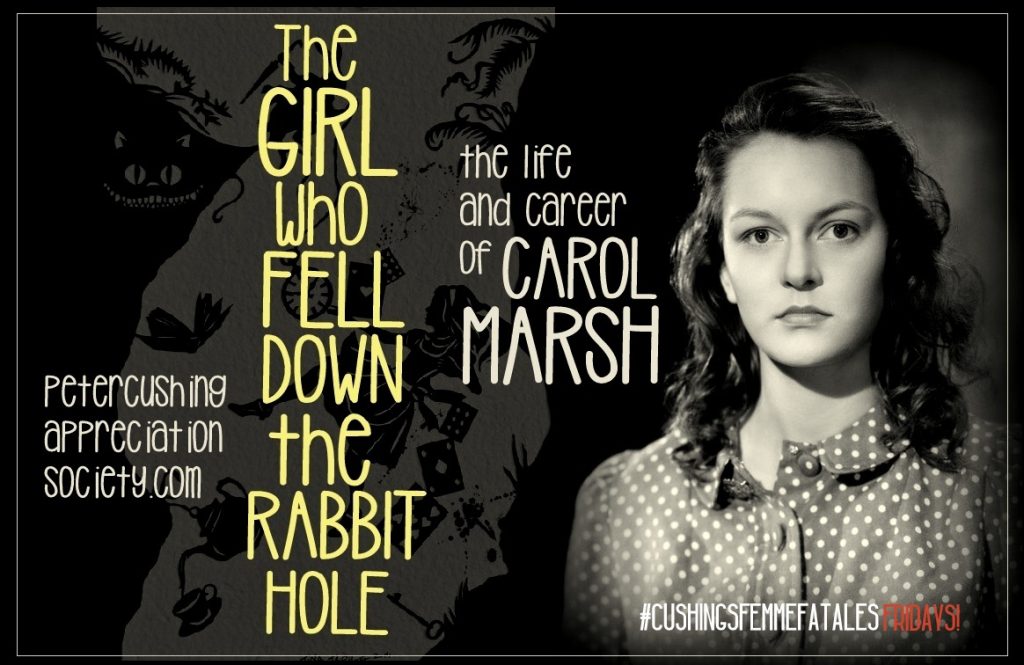
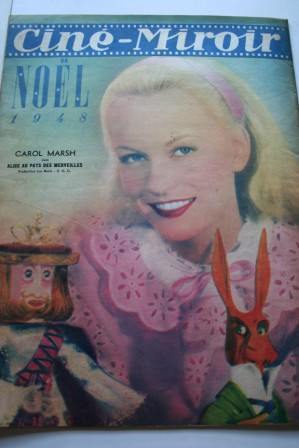


Carol Marsh is best known for her poignant performance as the waitress Rose in 1949’s classic British film noir “Brighton Rock” opposite Richard Attenborough’s sinister Pinky.
“Telegraph” obituary:
She was only 20 when she read for the part with the producer John Boulting and the star of the film, Richard Attenborough. As the impressionable young woman who falls for and marries the vicious small-time gangster Pinkie Brown (played by Attenborough), Carol Marsh turned in a performance of powerful pathos.
The close of Graham Greene’s novel, in which Rose returns home looking forward to listening to Pinkie’s recorded “love letter”, has been called one of the great harrowing finales of 20th-century English literature.
Before Pinkie is killed falling from the pier, he records a message for the doting, oblivious Rose in a “make-your-own-record” booth: “You wanted a recording of my voice, well here it is. What you want me to say is, ‘I love you’. Well, I don’t. I hate you, you little slut… “
But the film differs from the book in that, when Rose plays the record, the needle “sticks” – and she hears only “I love you”, repeated over and over again.
Carol Marsh was born Norma Lilian Simpson on May 10 1926 in Southgate, north London, the daughter of an architect and surveyor. She was educated at a convent school in Hammersmith where she often performed in school plays. Her first desire was to sing, and she won a £7-a-year scholarship to the Royal Academy of Music, where she studied speech and drama, with singing as a second subject.
She went on to the Rank Charm School before joining Rank’s repertory company
at Worthing, where her performances in As You Like It and White Heather won high praise.
After Brighton Rock (for which she changed her name to Carol Marsh) she dyed her hair platinum for the title role in Alice in Wonderland (1949). In the same year she was in three comedies: Marry Me, Helter Skelter, and The Romantic Age, in which she appeared with Mai Zetterling and Petula Clark.
She was the fragile, delicate yet ghoulishly determined Lucy, Christopher Lee’s ill-fated victim, in the 1958 Hammer production of Dracula, the first colour version of Bram Stoker’s classic. In the 1951 film of Scrooge, with Alistair Sim in the title role, Carol Marsh played the old skinflint’s sister Fan, who dies giving birth to his nephew, Fred.
Her career continued into the 1960s with films such as Man Accused and parts in television dramas, among them The Adventures of Sir Lancelotand Dixon of Dock Green. In the 1970s she appeared in the record-breaking West End play The Mousetrap.
She had made her television debut in 1950 in The Lady’s Not For Burning, starring Richard Burton and Alec Clunes. She was Miranda in a children’s version of The Tempest, and Alexandra in Little Foxes (both 1951). She featured in the 1959 Trollope serial The Eustace Diamonds, playing Augusta Fawn, and was Mrs Blacklow in the Arnold Bennett serialLord Raingo of 1966.
She was busier on radio, and was a member of the BBC Drama Rep at intervals between 1966 and 1979.
Later in life, Carol Marsh shunned publicity. But when she was in her sixties, the journalist Nigel Richardson traced and interviewed her for his travel book Breakfast in Brighton (1996).
“People kept telling me, ‘When the next film comes out you’ll be a star forever’,” she told him. “But it never happened.”
By then she was living a reclusive life in Bloomsbury, “with no one to please and no one to hurt me”. When Richardson praised her luminous performance in Brighton Rock, she replied that the thought of how good she might have been “crucified” her: “I’ve never seen the film and I couldn’t bear to.”
Carol Marsh died on March 6; she was unmarried.
The above “Telegraph” obituary can also be accessed online here.
- Liam
- No Comments
Sites of Interest
These are some of my favourite film websites. They are a fantastic resource for any film buff.

